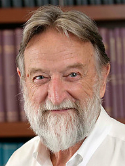| Abstract: |
Increasing rates of testicular germ cells tumors (TGCTs) overtime suggest that environmental factors are involved in disease etiology, but familial risk and genome-wide association studies implicate genetic factors as well. We investigated whether variation in the functional CAGn polymorphism in the androgen receptor (AR) gene is associated with TGCT risk, using data from a population-based family study. We estimated odds ratios (OR) and 95% confidence intervals (CI) for the association of CAG repeat length and TGCT risk using matched pairs logistic regression. Analyses of 273 TGCT case-mother pairs revealed no association between AR CAG repeat length and overall TGCT risk. However, risk of seminoma was significantly associated with shorter CAG repeat length [CAG 20-21 versus CAG ≤ 19: OR = 0.82 (95% CI: 0.43-1.58), CAG 22-23 versus CAG ≤ 19: OR = 0.39 (95% CI: 0.19-0.83) and CAG ≥ 24 versus CAG ≤ 19: OR = 0.42 (95% CI: 0.20-0.86)], with a highly significant trend over these four categories of decreasing CAG repeat length (Ptrend = 0.0030). This is the first report of a statistically significant association between AR CAG repeat length and seminoma risk, suggesting that increased AR transactivation may be involved in development of seminoma and/or progression of carcinoma in situ/intratubular germ cell neoplasia unclassified to seminoma. This result provides a rationale whereby androgenic environmental compounds could contribute to increases in TGCT incidence, and identifies for the first time a potential biological pathway influencing whether TGCTs achieve seminomatous versus nonseminomatous histology, a clinically and biologically important distinction. © The Author 2011. Published by Oxford University Press. All rights reserved. |




